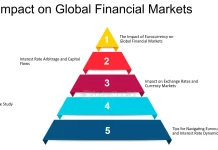According to the Morgan Stanley analysis, the fiscal deficit objective, which was 5.6% of GDP in FY24, is anticipated to be met by FY26, when it is predicted to be 4.5% of GDP. “A larger-than-expected transfer of surplus from the RBI has improved the fiscal headroom, which in our view will help to maintain the momentum on capex expenditure and increase targeted welfare spending,” the statement read.
Given the assistance from tax and non-tax sources, Morgan Stanley said it anticipates the possibility of a somewhat lower fiscal deficit objective (a little less than 5.1% of GDP).
The study states that the budget’s main themes would probably be focused social sector investment, capital expenditures to boost job development, and the “Viksit Bharat” initiative. Morgan Stanley stated, “We expect the focus to remain on capital expenditure over revenue expenditure and targeted social sector spending with focus on improving access to physical, social, and digital infrastructure, with fiscal prudence guiding the overall fiscal policy stance.”
Additionally, we anticipate that the budget would highlight the government’s plan to create a developed nation by 2047, known as “Viksit Bharat.” Furthermore, it stated that the budget might provide a roadmap for a medium-term strategy for fiscal consolidation after FY26.
It stated that although actual performance is a product of pre-budget expectations, the budget’s impact on the market has been on a secular decline (as assessed by market performance ahead of the budget). According to Morgan Stanley, the market appears to be approaching the budget with enthusiasm as of right now. If past performance is any indication, there may be volatility as well as a correction following the budget.
The report stated, “For the market, the key things to watch are changes to capital gains tax rates for equities, sector level incentives/spends, and the extent of fiscal consolidation (0 to 10 bps of GDP over the interim budget), which we do not expect.” Additionally, the report highlighted the delta in spending on physical and social infrastructure (by about 20-25 bps of GDP over the interim budget).
“We believe that the absence of significant tax cuts or spending on redistribution may surprise the market. The statement read, “We are underweight all other sectors and overweight financials, consumer discretionary, industrials, and technology.”
A comparable budget deficit to the interim budget from February, according to the report, points to no change in the gross and net issuance of G-Secs. “Due to the addition of GBI-EM, demand from international investors for G-Secs in FY25 is significantly higher. Morgan Stanley stated, “We view the rupee and G-Secs as good carry trades in the absence of a rate cut.”





























